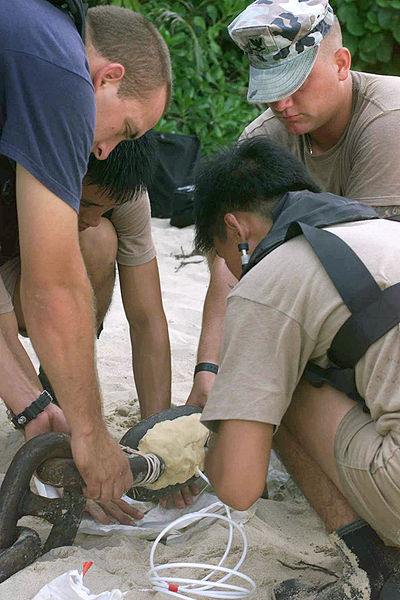C-4 or Composition C-4 is a common variety of the plastic explosive family known as Composition C, which uses RDX as its explosive agent. C-4 is composed of explosives, plastic binder, plasticizer to make it malleable, and usually a marker or odorizing taggant chemical. C-4 has a texture similar to modelling clay and can be molded into any desired shape. C-4 is relatively insensitive and can be detonated only by the shock wave from a detonator or blasting cap.
Blocks of C-4 cut to size during a demo training session, showing the white plastic explosive material
A detonation within a blast-resistant trash receptacle using a large C-4 explosive charge
Inserting a blasting cap into a block of C-4 to ready it for detonation
Wrapping on packaged C-4 indicate that it has been tagged for easier detection. Even if no taggant is used, sophisticated forensic means can still be employed to identify the presence of C-4.
Plastic explosive is a soft and hand-moldable solid form of explosive material. Within the field of explosives engineering, plastic explosives are also known as putty explosives or blastics.
Disposal of munitions with plastic explosives; note the malleability of the white plastic explosive charges
A C-4 charge packed onto a marine anchor chain
PE4 sticks, used alongside the L3A1 slab version by the British armed forces prior to the adoption of the later L20A1 block/L21A1 slab PE7 and L22A1 slab PE8 explosives
A 1.25 lb (570 g) demolition charge of C4 explosive








